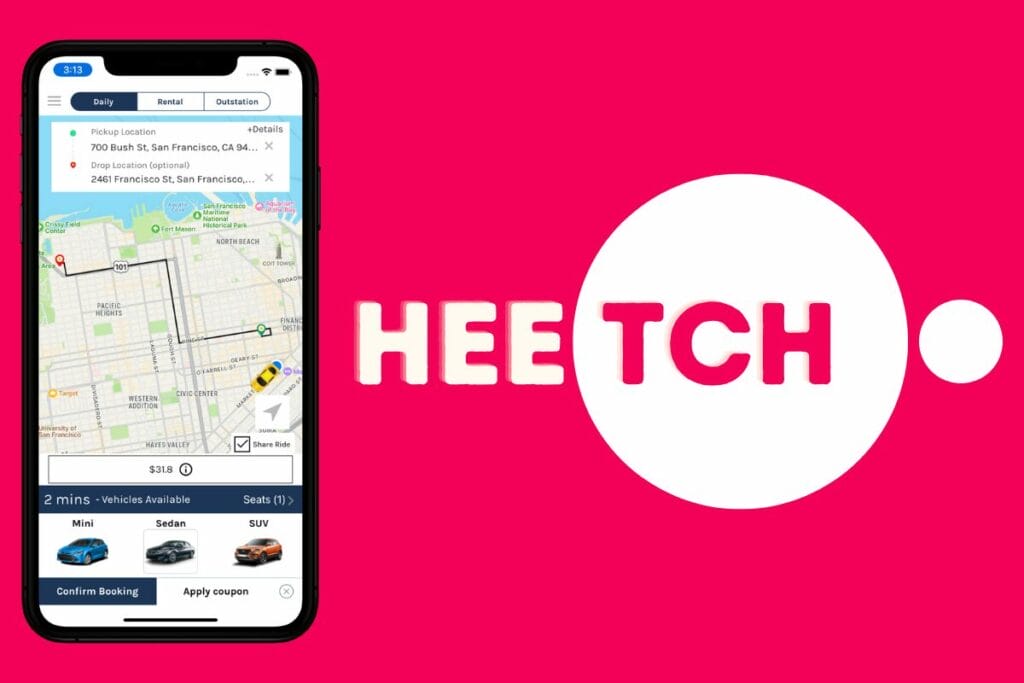Why language moves markets.
Every business wants to move faster. Whether that’s launching in a new market, rolling out a feature update, or pushing out a regional promotion. But speed isn’t just a product of smart engineering or agile marketing. It’s about how efficiently teams can operate across languages.
In a sector like mobility, where you may be using multiple languages both internally and externally–often in a single region– a delayed translation can hold up an entire release. A campaign that misses cultural context can underperform. A poorly localized user interface can lead to confusion, churn, or worse, lost trust.
These aren’t language issues: They’re business blockers.
The smartest mobility providers know this. Companies like Uber, FreeNow, BlaBlaCar, and Heetch are rethinking localization as a strategic capability.
Not a final checkbox before launch. Not a separate workflow. But a core enabler of product velocity, market expansion, and customer experience.
In this article, we’ll explore how these industry leaders are transforming localization from a necessary task into a competitive advantage, and what your team can learn from their approach.
The strategic localization imperative for mobility providers
When a campaign underperforms in one market, it’s not always the creative that’s to blame. It might also be the delivery. Delays in translation. A missed nuance. A message that didn’t quite fit the moment.
That disconnect isn’t just a language issue. It’s a systems issue. For many mobility platforms, translation and localization happens in the background. It’s handled manually, routed through email threads, delayed by mismatched assets or clunky approval processes.
The result is slower time to market, fragmented customer experiences, and launches that feel out of sync from the start.
Platforms that are outpacing the competition have taken a different route, by making localization part of their release cycle. Not a blocker, but a built-in advantage. Every UI update, push notification, and region-specific campaign is delivered with speed, clarity, and control because the infrastructure is designed to support it.
The more markets you operate in, the more critical this becomes. Without scalable workflows, every new language adds drag. But with the right setup, every new market becomes a new source of momentum.
Remember, in a sector that regularly deals with customers who speak multiple languages, localization isn’t a box to tick. It is a structural capability that drives faster releases, consistent brand experiences, and sustainable global growth.
What slows mobility platforms down (and how to fix it)
You can have the best teams, the fastest deployment cycles, and the clearest roadmap in the world. But if your localization workflow still lives in spreadsheets and scattered approvals, your global launch will always lag behind your ambition.
Translation delays aren’t just inconvenient. They’re expensive. A blocked release can mean missed revenue, lower engagement, and internal teams scrambling to fix what should have been streamlined. And it’s rarely one big failure. Instead, it’s the accumulation of small inefficiencies that slows everything down.
This compounding means that challenges show up fast:
- Feature rollouts delayed by translation backlogs
- Disconnected workflows across product, marketing, and support
- No clear view of what’s translated, reviewed, or still in progress
- Real-time messaging stuck behind manual processes
- Inconsistent voice and UX across different languages and markets
These aren’t the types of problems that can be solved by more people working more hours. Instead, they require a new approach: rethinking localization as a system, not a service. Bringing teams onto one platform, editing copy where it actually lives—in the UI, in Figma, inside the campaign flow– or setting up automations that eliminate repetitive work and reduce the risk of human error all lead to scalability, with less delay, lower downtime and better customer experiences.
The result:
- Content that moves with your sprint cycles
- Messaging that feels native in every market
- Teams that spend less time coordinating and more time launching
- Customer experiences that feel cohesive, everywhere
Localization doesn’t need to be a bottleneck. Fix the system, and instead slowing down processes, it becomes an enabler.
Real-world success: How leading mobility platforms are localizing at speed
Keeping the theory in mind is important, but what really matters is how localization works in practice, across teams, timelines, and territories. Here’s how four of the world’s most recognisable mobility platforms are solving real problems with scalable localization strategies.
FreeNow: Reducing friction, increasing speed

Operating across dozens of European cities, FreeNow faced the classic challenge of coordination at scale. Product, marketing, and localization teams were often working in parallel, but not always in sync. Translation was slowing down feature launches and stretching campaign timelines, especially when adapting content for multiple markets.
With Phrase, FreeNow unified its localization workflow across departments. Translators could work directly within the tools used by developers and marketers. Teams could track progress in real time, cut handover delays, and eliminate duplicate efforts.
The outcome: Faster time-to-market for feature releases and promotions, with improved message consistency across nine languages.
BlaBlaCar: Automating to enable expansion

As BlaBlaCar grew into new markets, so did its content workload. From user-facing UI text to support articles and regional campaigns, the localization pipeline was overwhelmed. Manual processes simply couldn’t keep up with the pace of expansion.
BlaBlaCar implemented Phrase to automate their localization workflow from end to end. This included machine translation where appropriate, centralized version control, and simplified review cycles for local teams.
The outcome: The company was able to localize more content, more quickly, and with fewer errors — all without needing to dramatically increase headcount.
Uber: Localizing at the speed of service

Few companies operate at Uber’s scale. With millions of users relying on real-time updates — ride statuses, driver communications, safety messages — even the smallest delay or inconsistency can erode trust.
To manage this complexity, Uber turned to Phrase as part of a broader strategy to integrate AI into its localization stack. The goal was not just faster translation, but smarter translation, with adaptive models, contextual quality checks, and direct integration into internal tools.
The outcome: Uber now supports over 50 languages with AI-enhanced localization, powering rapid iteration and globally consistent user experiences. Phrase plays a key role in this infrastructure, helping Uber scale communication without compromising accuracy or tone.
Heetch: Bringing global teams onto one platform

Heetch had a familiar challenge: teams working in silos. Product and development had their own tools and timelines. Localization often happened late in the process, with little visibility or alignment. The result? Delays, inconsistent UX, and tension between teams trying to move fast.
Phrase gave Heetch a centralized platform where everyone could collaborate. Product managers could scope translation needs early. Developers could push and pull content automatically. Localization teams had better context and clearer deadlines.
The outcome: A smoother, more transparent localization process that allowed Heetch to launch updates in multiple markets without extra coordination overhead.
From manual to scalable: What strategic localization looks like
For many mobility providers, localization wasn’t designed — it just happened. As companies expand into new markets, they build localization around the tools and processes they already have.
Email threads, spreadsheets, and manual file drops were good enough when operations spanned two or three regions. But those same workflows now underpin platforms operating in 20, 30, or 50 markets simultaneously.
What changed is scale — but not just in geography.
Modern mobility platforms aren’t shipping a handful of updates per year. They’re deploying new features weekly, sometimes daily. CRM teams are running dozens of hyper-targeted push campaigns at once. Support content is dynamic and constantly evolving.
Platform infrastructure is faster, more modular, and more integrated than ever before. But in many cases, translation and localization are still treated as a static, manual process.
This disconnect creates drag. If translated content can’t keep up with product releases, features get delayed. If marketing has to chase approvals through four different tools, campaigns miss their window.
If support teams are waiting on new translations to update help content, customers get mismatched or outdated experiences.
So why hasn’t it been fixed already?
Because localization has traditionally been treated as a service layer. As something external to the product and outside the sprint. The focus was on quality, not velocity. Or if you prefer, on language instead of systems. And while the rest of the platform matured, localization lagged behind in both tooling and priority.
But while most teams have learned to work around these gaps, the cost is compounding. Every manual fix adds complexity. Every delayed campaign leaves growth on the table. And every fragmented workflow makes it harder to scale efficiently into new markets.
Localization isn’t just failing to keep up. In many cases, it’s holding teams back from moving at the pace their platform architecture now allows. What’s needed isn’t more workarounds. It’s alignment. A model where localization moves in sync with product, marketing, and support, instead of behind them.
Here’s how the shift looks in practice:
| Legacy Approach | Strategic Approach |
| Spreadsheets and email chains | Centralized platform with real-time collaboration |
| App store delays for every change | Over-the-air updates |
| QA bottlenecks that slow reviews | AI-powered quality checks and automated validation workflows |
| Context-lacking translation files | In-context editing directly in Figma and live UI |
| Teams working in silos | Shared workflows connecting product, marketing, and localization |
Each of these shifts removes friction. Instead of waiting on handovers or reworking poor translations, teams move together, previewing updates in real time, reviewing copy where it lives, and deploying changes without delay.
The result isn’t just smoother operations. It’s a meaningfully better product experience. One that feels native, seamless, and immediate to users no matter where they are.
That kind of experience manifests in small but critical ways:
- The interface feels local, not translated. Buttons are the right length. Instructions make sense in context. There’s no awkward phrasing, truncated labels, or last-minute edits that break the design.
- Updates land at the same time everywhere. Whether you’re a user in Warsaw, Madrid, or Johannesburg, you get the same new feature at the same moment — in your language, with no lag, no mismatched messaging, and no need to wait for a patch.
- Push notifications and alerts feel timely and personal. Because campaigns are localized and launched simultaneously, users don’t receive confusing offers or outdated service information. Real-time messaging stays real.
- Support content is aligned with the latest product release. When something changes in the app, users can instantly find accurate help content in their own language, without having to dig through outdated articles or switch to English.
- Brand tone feels consistent across every touchpoint. From onboarding flows to confirmation emails, the voice feels familiar and coherent, not like a mix of literal translations handled by different teams on different timelines.
These are the details that build trust. They reduce friction, support usability, and make your platform feel like it was built with every market in mind, instead of just adapted after the fact.
How high-performing teams accelerate localization
Mobility providers that localize well aren’t just translating content quickly. They’re embedding localization into their core workflows across product development, marketing execution, and operational planning. This shift isn’t about adding more resources. It’s about changing how teams work, communicate, and collaborate around content that moves across languages and markets.
Engineering and product teams
Integrate localization into the development process
When localization is handled after a product feature is already built, it creates a natural bottleneck. Translation requests are passed between teams, QA is delayed, and app store approvals become a dependency — all of which slow release cycles. But when localization is part of the build process itself, that delay disappears.
This change is enabled by tools and workflows that let teams work with real content in real time. UI strings can be previewed in design tools like Figma or tested directly in staging environments with localized versions already in place. Engineers no longer need to hard-code text or wait for final translations before shipping, because content and code can be decoupled and updated independently.
The result is a more fluid development cycle. Features move from design to release without being held up by copy updates, and localization happens in parallel instead of in sequence. This gives product teams more freedom to release quickly, iterate globally, and maintain consistency across every market.
Ship updates on time, without workarounds.
- Plug localization directly into your development cycle using over-the-air updates. No more waiting on app store approvals for last-minute copy changes.
- Connect Phrase Strings with your design and development stack, so UI content is translated, reviewed, and previewed exactly where it lives — including Figma.
- Eliminate bottlenecks caused by version mismatches or last-minute rewrites by keeping localization in lockstep with your sprint cadence.
Marketing and CRM teams
Run campaigns that are aligned and on time in every region
For marketing teams, the real challenge isn’t just translating a campaign, it’s coordinating multiple moving parts across regions, timelines, and stakeholders.
Copy has to land with the right tone, at the right time, in the right language. Without the right systems in place, this often turns into a logistical scramble that compromises either speed or quality.
What high-performing teams do differently is plan localization into the campaign cycle from the beginning. Rather than sending final copy to a translation team just days before launch, they build multilingual planning into the workflow itself.
That includes structured content handoffs, regional review loops, and previews of how translated copy will appear across channels, whether it’s a push notification, an email, or in-app content.
This integration makes a tangible difference. Campaigns go out on time in every market, creative teams avoid last-minute rework, and local teams have more influence over the final result.
Most importantly, the customer experience improves because messages feel timely, relevant, and on-brand, wherever they’re received.
Launch global campaigns as fast as local ones.
- Translate email, push, and in-app messaging simultaneously across markets, with workflows that support regional nuance and campaign-specific tone.
- Keep everything aligned — from CTAs to timing — by giving local teams the ability to work in context, not from static files.
- Reduce rework by using adaptive machine translation to generate first drafts that are on-brand from the start.
Localization and operations
Automate the routine, focus on what matters
As content volumes grow, managing localization manually becomes unsustainable. Manually assigning tasks, checking statuses across multiple tools, and coordinating updates through email or spreadsheets not only drains time but also increases the risk of errors and misalignment.
High-performing operations teams solve this by building automation into their localization workflows.
Instead of routing jobs by hand, they define rules and triggers (For example, sending new product copy to a specific language team as soon as it’s tagged in the system). Instead of chasing approvals, they use shared platforms where translators, reviewers, and requesters can all see the same status, context, and history.
This doesn’t just reduce overhead, it also improves control. Leaders gain real visibility into how localization is progressing across teams and markets. They can spot delays early, forecast workloads, and maintain quality without micromanagement.
And because the basics are handled automatically, teams can focus on higher-value work like refining tone, improving efficiency, and scaling best practices across the business.
How to scale content without scaling headcount.
- Use Phrase Orchestrator to automate your workflows — routing tasks based on project type, language, or urgency, without manual handoffs.
- Get visibility into every stage of the process with centralized dashboards and real-time progress tracking.
- Leverage Phrase’s adaptive machine translation (NextMT) to deliver fast, high-quality translations that learn from your content and improve over time.
These shifts don’t just make individual teams more efficient. They change how entire organizations operate.
When localization is a shared, integrated capability instead of a blocker, product updates move faster, campaigns land more effectively, and customer experiences improve everywhere, meaning there’s a direct line from localization to P&L.
Conclusion: Don’t let language be the bottleneck
For mobility platforms expanding across markets, the ability to move quickly depends on more than code or campaign strategy. It depends on whether language can keep up. It’s important to remember that Speed is no longer a competitive advantage, it’s the baseline
The companies leading this shift aren’t treating localization as a last step. They’ve built systems where translated content moves in parallel with product, marketing, and support. The result is faster launches, sharper messaging, and more cohesive experiences across every region they serve.
For teams still managing localization through disconnected tools or manual processes, the cost isn’t just time. It’s missed opportunities, delayed growth, and inconsistent customer journeys.
The next wave of global mobility won’t be defined by who moves first — but by who can move fast, and still speak to every customer like they were there from the beginning.
Winning globally won’t come from speed alone. It will come from building experiences that feel local, relevant, and ready, no matter how fast you move or how many markets you serve.





